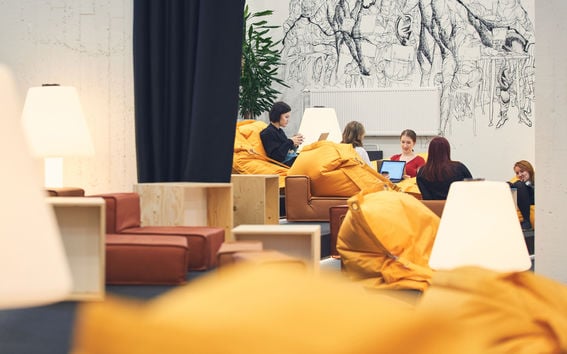Course description of Emerging Designs
About the course
Emerging Designs course is a Masters’ level-course run annually in the II period at Aalto ARTS, being an advanced studies course at Collaborative and Industrial Design programme. The students work towards a conceptual design course in the autumn for 6–7 weeks, and those who want to continue, can do so in the spring for another similar period during From Concepts to Designs, where a prototype of some key aspect of the concept is developed and validated.
Learning outcomes
On successful completion of this course, students will be able to:
- Develop and execute suitable designerly strategies for different design objectives, with focus on conceptual design.
- Generate insights via creative collaboration with users and stakeholders.
- Create representations of solution concepts, articulating the design intent and navigating the solution space sufficiently and efficiently, valuing and argumenting decisions.
- Articulate an advanced personal metacognition as a designer, by recognising, explaining, and applying selected concepts and principles of design emergence and activity, as drawn from design research and empirical experience.
During the course, the students constructively develop their understanding of design as an activity, based on, and focusing on the following concepts and skills: Creativity and design – Concept creation and emergence – Development of design expertise – Practical skills for creating representations of design contents in topical field – Role of research in concept creation – Concept validation
The assessment of the course is roughly split in half between the team project results, and the independent reflective essay. Pre-requisite for the course is User Inspired Design – course, or comparable proven understanding of principles of human centered design (HCD).
Theme of autumn 2021 course
In the autumn of 2021 students were challenged by a brief developed together with a Nordic collaboration project “Healthcare and Care through Distance-spanning Solutions” (“Vård och omsorg på distans”, VOPD), funded and arranged by The Nordic Council of Ministers and Region Västerbotten.
The students were asked to illustrate how the future of healthcare and social care will look like by 2030 and beyond. The outcomes should reflect the Vision 2030 set by the Nordic Council of Ministers:
The Nordic region is the most sustainable and integrated region in the world. Social care & healthcare services are integrated, and innovations developed in different regions are used across the Nordics. The Nordic citizens have reported remarkable increase in quality of life. There is a mutual trust between care providers and users due to secure data processing and management and customised, personalised care. The care services are built around the individual — they are easily accessible, empowering, and provide more independency and possibilities to make independent choices.
In teams of 3–4, the students worked for six weeks in November–December 2021. Their assignment was to provide a conceptual proposal addressing a team’s selected topic, from within the theme. In their design work and concept, students were asked to consider and portray the vision statement and the values of VOPD project.
As a result the teams produced seven concepts that tackle current problems of the Nordic healthcare system with a vision in 2030. At the same time, they provoke questions and highlight issues relevant to the area, in rhyme with the ethos of solutions informing about the problem space. The proposed concepts range from supporting mental wellbeing (MONCOM) and alleviating cognitive impairment caused by dementia (Mimi) to the use of mobile and accessible MRI imaging (AMRI Remote and On Time). Central in them is the theme of distance-spanning, for example for paediatric diagnotics (BUBA) and being connected to the healthcare staff and family members through technology (Hopealinja and Enva).
On behalf of Emerging Designs course we are thankful for the collaboration with VOPD project for their support in briefing, and continuous feedback for the work of the students.
You might also be interested in these
Collaborative and Industrial Design - Design, Master of Arts (Art and Design)
The studies in Collaborative and Industrial Design (CoID) focus on design's role in society. Students develop skills enabling them to work as design experts and leaders, entrepreneurs, and innovators in a range of roles within industry, business, communities, education, and public sector.

School of Arts, Design and Architecture
One of the most prestigious universities in its fields. We educate our students to create imaginative, collaborative, compassionate and unconventional approaches to the most pressing challenges of today.

- Published:
- Updated: